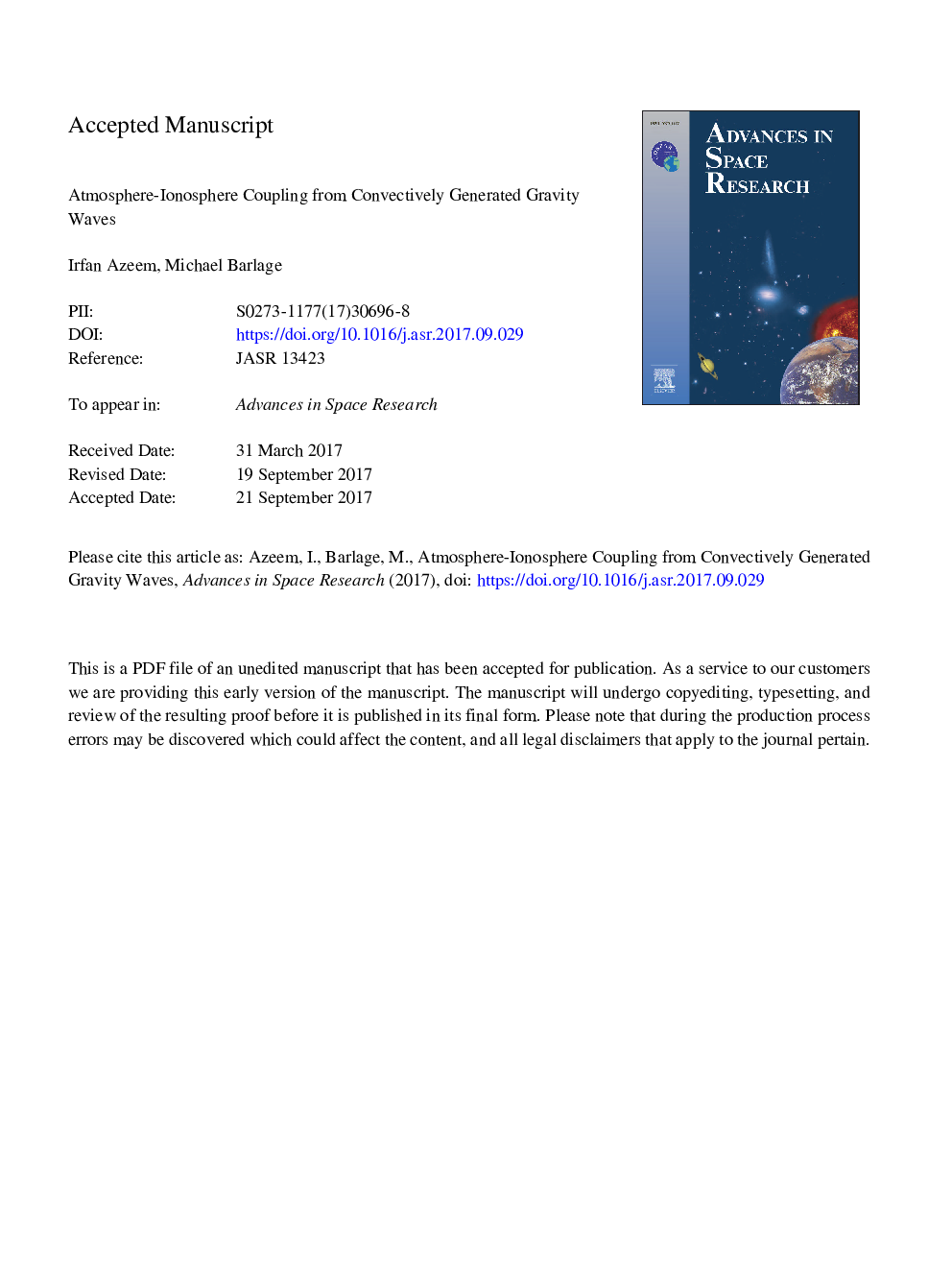| Article ID | Journal | Published Year | Pages | File Type |
|---|---|---|---|---|
| 8132148 | Advances in Space Research | 2018 | 18 Pages |
Abstract
Ionospheric variability impacts operational performances of a variety of technological systems, such as HF communication, Global Positioning System (GPS) navigation, and radar surveillance. The ionosphere is not only perturbed by geomagnetic inputs but is also influenced by atmospheric tides and other wave disturbances propagating from the troposphere to high altitudes. Atmospheric Gravity Waves (AGWs) excited by meteorological sources are one of the largest sources of mesoscale variability in the ionosphere. In this paper, Total Electron Content (TEC) data from networks of GPS receivers in the United States are analyzed to investigate AGWs in the ionosphere generated by convective thunderstorms. Two case studies of convectively generated gravity waves are presented. On April 4, 2014 two distinct large convective systems in Texas and Arkansas generated two sets of concentric AGWs that were observed in the ionosphere as Traveling Ionospheric Disturbances (TIDs). The period of the observed TIDs was 20.8Â min, the horizontal wavelength was 182.4Â km, and the horizontal phase speed was 146.4Â m/s. The second case study shows TIDs generated from an extended squall line on December 23, 2015 stretching from the Gulf of Mexico to the Great Lakes in North America. Unlike the concentric wave features seen in the first case study, the extended squall line generated TIDs, which exhibited almost plane-parallel phase fronts. The TID period was 20.1Â min, its horizontal wavelength was 209.6Â km, and the horizontal phase speed was 180.1Â m/s. The AGWs generated by both of these meteorological events have large vertical wavelength (>100Â km), which are larger than the F2 layer thickness, thus allowing them to be discernible in the TEC dataset.
Related Topics
Physical Sciences and Engineering
Earth and Planetary Sciences
Space and Planetary Science
Authors
Irfan Azeem, Michael Barlage,
